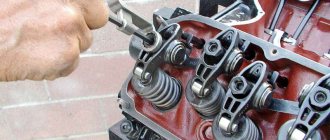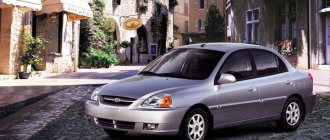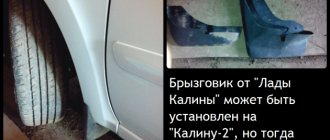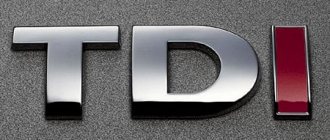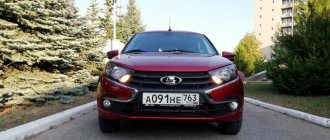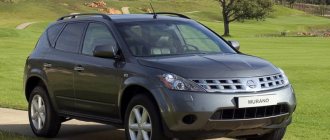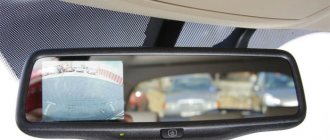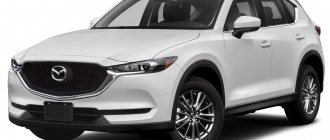Kia Ceed has conquered Europe. After several years of producing cheap, fairly reliable, but sloppily assembled and rusting cars, the Korean manufacturer has finally introduced an attractive, modern, well-equipped and perfect car in every way - the Kia Sid. This immediately reflected in commercial success. Ceed was introduced in 2006 and was restyled in 2009. 8 years have passed since the appearance of the Korean compact. This is quite enough to evaluate its durability and operating costs.
Body
The LED was specially developed for the European market at Kia's design center in Rüsselsheim near Frankfurt. Car production for Europe is established in Slovakia in Zilina.
The Kia Ceed has a timeless styling and does not evoke the slightest feeling of disharmony. The compact has three body styles: a 5-door hatchback, a station wagon and a sporty 3-door hatchback called Pro_cee'd.
The body is well protected from corrosion, but, unfortunately, has a number of shortcomings that the buyer should be aware of. The first is abrasion of the paintwork on the sills at the point of contact with shoes when getting into the car. The second is problems with the quality of the paintwork itself, which often peeled off on copies of the first years of production. Moreover, the problem mainly concerned red cars. Most of them were repainted under warranty. You should not forget about this when checking the thickness of the paint coating using the device. The third issue is the appearance of signs of corrosion on the tailgate around the license plate. The latest problem affected most of the cars.
After restyling in 2009, the shape of the front part of the body and the interior changed. The list of serial equipment and the range of engines have also been updated.
Engine
Kia Sid was equipped with three petrol (1.4 l - G4FA, 109 hp; 1.6 l - G4FB, 122 hp; 2.0 l - G4FC, 143 hp) and two diesel (1 .6 l - D4FB, 115 hp and 2.0 l - D4EA, 140 hp) engines.
The 1.4 liter and 1.6 liter petrol power units are equipped with a chain drive gas distribution mechanism with a declared resource of at least 150 thousand km, after which the chain must be replaced. But several owners were unlucky and the chain jumped one or two teeth. This happened at the time of launch with a mileage of 40 - 90 thousand km on engines produced in 2007 - 2008, due to the tensioner not coping with its task. There have also been cases of chain stretching during mileage of 60 – 90 thousand km.
Many owners of petrol Kia Sid with 1.4 and 1.6 liter engines note increased vibration after warming up at idle speed or when the speed increases to 3000. This phenomenon occurs with a mileage of 20 - 90 thousand km. One of the causes of vibrations is a deteriorated engine mount. It is sometimes possible to get rid of vibrations when the speed increases after flashing the engine ECU. “Diesel sound” is another feature of the engine, while replacing the timing chain drive does not always solve the problem. Often vibration and roaring during acceleration is caused by the “undercutting” connection of the exhaust manifold to the exhaust pipe flange.
With a mileage of more than 60 – 80 thousand km, the valve cover begins to “sweat”. More often the situation can be corrected after tightening the fastening bolts. At the turn of 60 - 90 thousand km, the rear crankshaft oil seal may also become snotty.
| Kia Cee'd SW (2007-2009) |
The 1.6 liter diesel engine has two overhead camshafts, which are driven by two chains. The 2.0 liter diesel engine has a single camshaft driven by a timing belt.
With a mileage of more than 100 - 120 thousand km, turbodiesels begin to gradually “take” oil; from replacement to replacement, the level drops from the MAX to MIN mark.
The diesel Kia Ceed turbine often starts to whistle after a mileage of 70 – 140 thousand km. But it doesn’t “die” right away; sometimes even 20 thousand km are enough until the loan day, and sometimes even 100 thousand km. One of the common causes of turbine failure is a failure of the boost sensor, or poor contact in the sensor wiring. A new turbine will cost 40–50 thousand rubles.
Problems with starting a diesel engine may occur due to a failure of the fuel rail pressure regulator. A new regulator will cost 5 thousand rubles, replacing it will require about 1.5 thousand rubles.
| Kia Pro_Cee'd (2007-2011) |
Glow plugs may require replacement with a mileage of more than 80 - 100 thousand km (about 500 rubles per piece). As a rule, they become the culprits for difficult starting in cold weather, provided that normal winter diesel fuel is used. The injectors last for about 120 – 150 thousand km. A new one costs about 12–16 thousand rubles, and repairing a broken one will cost 4–7 thousand rubles.
Interior
The quality and functionality of the interior are admirable. Considering the price of the Sid, the interior pleasantly surprises with its good quality plastic and build quality. The front panel is made of soft plastic.
The positive image is sometimes spoiled by the freezing head unit of the factory audio system (a short-term disconnection of the battery helps), loose front door handles and squeaks when driving on rough roads. It should be noted that this applies more to pre-restyling cars. After the lifting, the situation improved noticeably.
Most owners complain about the unsatisfactory quality of the seats. The rear seats are most susceptible to wear and tear, and their backrests are poorly secured.
One of the main advantages of the Kia Ceed is its good equipment. The vast majority of cars are equipped with power steering, air conditioning and, at a minimum, power front windows and power mirrors. The factory audio system has good sound.
After the update, the performance characteristics of the electric power steering have significantly improved - the steering wheel has become a little lighter, and at the same time the feedback from the road has increased. The most important thing is that the amplifier is quite reliable.
Suspension
All versions of the Kia Sid have the same suspension design, which, depending on the body type and engine, can have different settings. On the front axle, as always, is MacPherson. The lever design allows you to change only ball or silent blocks, which significantly reduces repair costs. At the rear, a multi-link design is used. It is a pity that the station wagon version does not use a conventional torsion beam, which is cheaper to operate. However, owners praise the chassis for its durability. The reservations concern small things: the steering tips wear out relatively quickly, and sometimes the boots and bump stops of the shock absorbers knock.
Engine and transmission
The base engine of the Kia Ceed is a 1.4-liter 16-valve petrol unit. It originally had a power of 109 hp. In Europe, after restyling, engine output was reduced to 90 hp. for environmental reasons. The difference in power was noticeable. Fortunately, the traction deficit manifested itself mainly when driving at high speeds.
The second most popular is a 1.6-liter gasoline 16-valve unit with a capacity of 126 hp. Both engines have a timing chain drive. As practice shows, the chain is reliable and the timing belt truly does not require maintenance.
The role of the flagship engine was assigned to a 2-liter gasoline engine with a power of 143 hp. Most often it is found in the 3-door Pro_cee'd. The motor has a timing belt drive. Unfortunately, in terms of its technical and operational characteristics, it cannot compete with 2-liter units from such manufacturers as Honda and Toyota. However, the average owner does not have to complain about a lack of power.
The most widespread among diesel engines is the 1.6 CRDi. This is a modern engine with a timing chain and a common rail direct injection system. It exists in two versions - 90 and 115 hp. The weaker version does not have a dual-mass flywheel and a particulate filter, which means a minimum of problems and operating costs.
An alternative turbodiesel option is the 2-liter 2.0 CRDi unit. It has a belt-type timing drive and a dual-mass flywheel. This engine is well suited for long routes; in the city the 1.6 CRDi is quite sufficient.
In weak versions of the Sid, a 5-speed manual transmission was installed, and in stronger versions, a 6-speed gearbox was installed. After restyling, the 6-speed manual transmission came to all turbodiesels and popular gasoline engines with a displacement of 1.6 and 2.0 liters. Many cars are equipped with an automatic transmission.
Specifications
Let's start our review of the Kia Sid with the engine; it is modern, but simple, without any superchargers. The hood is heavy and lacks sound insulation, but overall the engine is balanced and runs quietly. There are three petrol engines to choose from: 1.4, 1.6 and 2 liters. The 1.4 liter is a bit weak for this car, although it is reliable and works fine. For 1.4 - 105 horsepower, for 1.6 - 122 horsepower and for 2 liters - 142. For 1.4 and 1.6, chain drive. Usually there are no problems with motors.
The engines are equipped with manual and automatic four-speed gearboxes. Reliable, shifts quickly, but not great. Fuel consumption in the city is 10 liters, on the highway - seven. The manual transmission has new systems that allow for crisper shifting.
There are 1.5 and 2 liter diesel engines, but they are very demanding on fuel quality. You should not take an automatic transmission with them; it often breaks down with a diesel engine.
There is a lot of space under the hood; you can do simple operations yourself. As standard, the engine has air conditioning and an ABS system. There are no new technologies here that haven't been proven enough. Not an electronic gas pedal, there is an air intake. 15-16-inch diameter wheel rims are installed.
ISG
Just before the update in March 2009, a version equipped with ISG – Idle Stop&Go – appeared. This system automatically turns off the engine when it is idling, after stopping, or when the vehicle is moving at half speed with the clutch pedal depressed and at a speed of less than 4 km/h. According to the manufacturer, in urban driving conditions, when the car stops frequently, ISG reduces fuel consumption by 15%. The ISG stops operating when the remaining battery charge drops below 75%, meaning there is insufficient power reserve for the next start.
In Kia Sid with the ISG system, the starter wears out quickly, and in diesel versions, the turbocharger wears out. To restore the starter you will need about 6,000 rubles, and the turbocharger - from 12 to 25 thousand rubles.
Technical specifications Kia Ceed station wagon 2010
The basis for the Sporty Wagon was a front-wheel drive platform created by the Hyundai-Kia alliance.
The same-platform Hyundai i30 is built on it. According to the characteristics of the first generation Kia Sid station wagon, it is not much inferior to modern cars. The engine range is European-style. There is plenty to choose from - three petrol and two diesel engines with five- and six-speed manual transmissions or a 4-speed automatic.
Dimensions and volumes
Kia Sid station wagon 2008 has the following characteristics and dimensions:
- length x width x height – 4470x1790x1525 mm;
- wheelbase – 2650;
- ground clearance – 150;
- weight – 1317 kg;
- load capacity – 553 kg;
- trunk capacity – 534/1664 l;
- loading height – 590 mm;
- Fuel tank volume – 53 l.
Engine characteristics
The youngest in the line of engines for the Kia Ceed SW 2010 is the 1.4 G4FA (DONC CVVT) petrol engine. It was equipped only with a 5-speed manual:
- power – 109 hp;
- torque – 137 Nm;
- compression ratio – 10,5;
- number of valves per cylinder – 4;
- acceleration to 100 – 11.7 seconds;
- fuel consumption (city/highway/mixed) – 7.9/5.4/6.3 l;
- The fuel used is AI-95.
Until 2008, the 1.6 G4FC engine developed 115 horsepower and was combined with a manual or automatic transmission. Later the power was increased to 122 hp. With. Let's look at the characteristics of the 1.6 engine in the Kia Ceed SW 2010 with 4 automatic transmission:
- power – 122 hp;
- torque - 154 Nm;
- number of valves per cylinder – 4;
- compression ratio – 10,5;
- acceleration to 100 – 11.1 seconds;
- fuel consumption - 8.9/5.9/6.9 l;
- fuel - AI-95.
The two-liter G4GC unit was offered with a 6-speed manual transmission or 4-speed automatic transmission. More often on the Kia Sid station wagon 2011 it is found with an automatic transmission, so we will consider this version:
- power – 143 hp;
- torque - 186 Nm;
- number of valves per cylinder – 4;
- compression ratio – 10,3;
- acceleration to 100 – 10.7 seconds;
- fuel consumption - 10.2/6.2/7.7 l;
- fuel - AI-95.
The two-liter diesel engine worked only with a six-speed manual gearbox:
- power – 140 hp;
- torque – 305 Nm;
- number of valves per cylinder – 4;
- acceleration to 100 – 10.5 seconds;
- fuel consumption - 7.7/4.7/5.8 l;
- compression ratio – 17,7;
- fuel - diesel.
Suspension, brakes and wheels
The chassis of the Kia Ceed SW 2011 lasts a long time. At the front there is an independent suspension with McPherson struts, at the rear there is an independent multi-link. Both axles are equipped with hydraulic shock absorbers with a bilateral principle of action and anti-roll bars. All brakes are disc, front ventilated. Wheel sizes from 185/65R15 to 205/55R16.
Safety
Korean cars attract buyers not only with an impressive range of equipment, but also with a level of safety. In crash tests carried out in 2007 using the Euro NCAP method, the Kia Sid station wagon 2007 showed high results.
It received the maximum five stars for the protection of adults inside the car, and four stars for child safety. In terms of pedestrian protection, it scores an average of two out of four.
Passive safety systems here are represented by two front airbags (driver, passenger), curtain and side airbags , three-point seat belts, and an ISOFIX mount for child car seats.
Active safety systems include auxiliary systems:
- ABS - anti-lock wheels;
- EBD - brake force distribution;
- BAS - emergency braking assistance;
- ESP - directional stability (optional).
In addition, there are power brakes and rack-and-pinion steering with electromechanical power assistance.
Body dimensions of Kia CEE'D
| Version | 3d | 5d | Station wagon |
| Dimensions (L / W / H) | 425/179/145 cm | 424/179/148 cm | 447/179/153 cm |
| Wheelbase | 265 cm | 265 cm | 265 cm |
| Trunk capacity | 340/1300 l | 340/1130 l | 535/1665 l |
